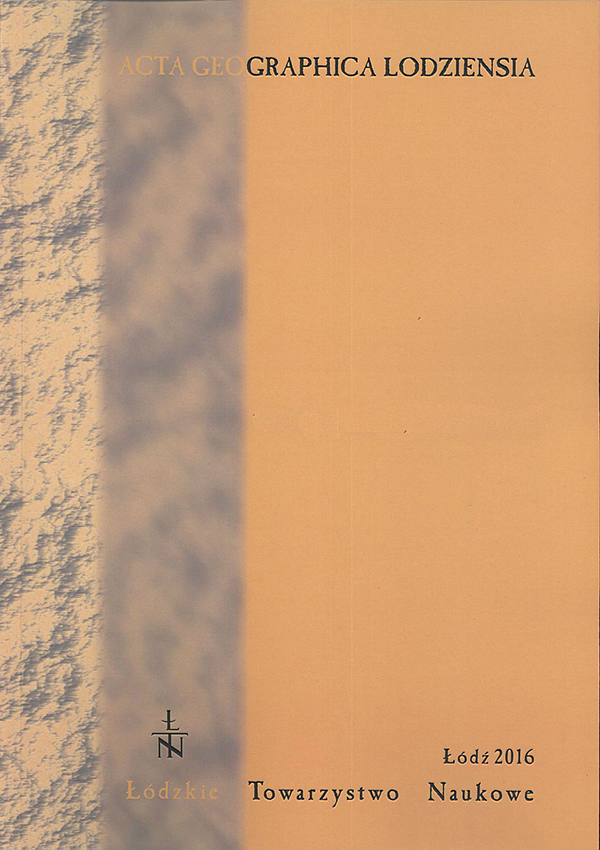Warunki paleoekologiczne subkopalnego koryta Kolonia Bechcice na tle hydrologii środkowego odcinka doliny Neru
Palaeoecological and palaeohydrological patterns of the Kolonia Bechcice subfossil oxbow in the mid-Ner River valley
Author(s): Mateusz Płóciennik, Piotr Kittel, Ryszard Krzysztof Borówka, Katarzyna Cywa, Daniel Okupny, Milena Obremska, Dominik Pawłowski, Renata Stachowicz-Rybka, Rafał Szperna, Andrzej WitkowskiSubject(s): Geography, Regional studies, Environmental Geography
Published by: Łódzkie Towarzystwo Naukowe
Keywords: palaeochannel; palaeoenvironmental reconstruction; palaeoecology; Ner River valley; Central Poland
Summary/Abstract: Over the last decade intensive geoarchaeological studies in the Ner River middle section, east toLutomiersk town, have been conducted. This stretch of the valley is composed from the Late Weichselianand Holocene sediments, well documented in Kolonia Bechcice (NKB) palaeochannel sediments. The NKB sequence was analysed according to the abiotic (geological and chemical sedimentcomposition) and biotic (plant macrofossils, charcoal, pollen, diatoms, cladocerans and midges) proxy.The investigated palaeochannel was cut-off from the riverbed in the Younger Dryas. Its history may bedivided into five distinct phases. During the Younger Dryas, the NKB was a relatively deep, oligotrophicwater body. Open communities of boreal plant species dominated in the valley. Abundantcold-adapted cladocerans and midges were found in the oxbow. From the onset of the Holocene, thelake became a eutrophic, overgrown pond which quickly palludified and transformed into a rich fenwith ferns and birches. During the Preboreal Period, birch and pine forests, subsequently replaced bymixed coniferous forests in the Boreal Period, emerged in the NKB vicinity. At that time, the ecosystemof the fen went through wet and dry phases, which caused peat decomposition. Possibly due topermanent dry conditions, there is a hiatus in the middle of the Holocene fen stratigraphy. A peatsequence is covered by fluvial silt and sand deposits from the Subatlantic Period. In this layer, thereare few aquatic plant macrofossils, diatoms, cladocerans and chironomids, which indicates the existenceof seasonal pools. In pollen communities, there are present synanthropic species and cereals, as wellas a visible increase in the share of NAP. From the 145 cm core depth, charcoal remains start to accumulatein the sediment. Seasonally, shallow pools emerged after local floods in the palaeochannel. Inthe sediments from the last few centuries, an increase of fluvial activity and accumulation of overbankdeposits can be observed, which is associated with human activity. Since the Younger Dryas, the NerRiver valley has been a dynamic system linked to local hydrological and geological conditions. The NKB palaeochannel has remained under a much stronger pressure of climate changes than palaeolakeslocated on uplands in the Łódź region.
Journal: Acta Geographica Lodziensia
- Issue Year: 2016
- Issue No: 105
- Page Range: 107-124
- Page Count: 18
- Language: Polish

